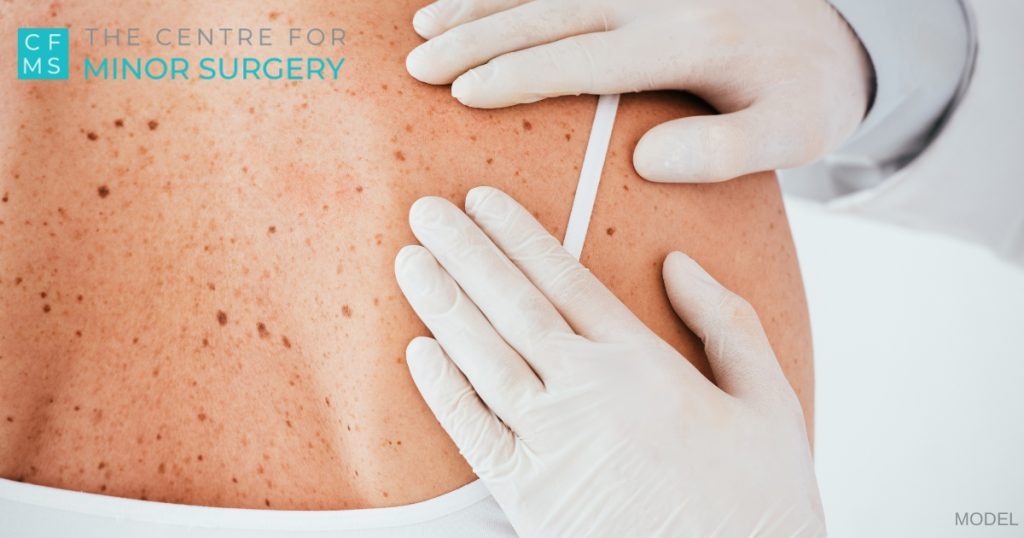Dealing with skin cancer requires a serious approach. But with early detection and appropriate treatment, there’s plenty of reason to be optimistic. This blog post will answer 6 common questions about skin cancer to help you better understand this condition.
1. What Does Skin Cancer Look Like?
Skin cancer can manifest itself in various ways. Common signs and symptoms include:
- New or changing moles or growths on the skin
- Asymmetrical moles or color variations within a mole
- Sores that don’t heal within a few weeks
- Irregularly shaped or discolored patches on the skin
- Itching, tenderness, or bleeding in an area of the skin
- Moles larger than 6 mm in diameter
- Spots that are different from surrounding skin, either in texture or color
2. How Is Skin Cancer Diagnosed?
Early detection plays a crucial role in successfully treating skin cancer. To diagnose skin cancer, your healthcare provider may:
- Conduct a visual examination of your skin to identify any suspicious areas
- Perform a biopsy, where a small sample of tissue is taken from the affected area for further examination under a microscope
3. What Is the Treatment for Skin Cancer?
The treatment options for skin cancer may vary depending on the type, location, and stage:
- Surgical Excision: This procedure involves removing the cancerous tissue along with a margin of healthy tissue to ensure complete removal.
- Curettage and Electrodesiccation: During this procedure, the cancerous tissue is shaved away, and the area is then treated using an electric current to destroy any remaining diseased cells.
- Skin Flap Grafting: In some cases, for cosmetic purposes, larger skin cancers may require reconstruction using a skin flap graft. This involves grafting healthy skin from a nearby area to replace the excised tissue.
4. What Are the Potential Side Effects of Treatment?
Like any medical procedure, skin cancer treatment may have potential side effects. These can include:
- Scarring: Depending on the extent of the procedure, scarring may occur. However, our skilled surgeons strive to minimize scarring and optimize cosmetic outcomes.
- Infection: There is a small risk of infection after surgery, but proper wound care and follow-up with your healthcare provider can help mitigate this risk.
- Changes in sensation: Some patients may experience temporary or permanent changes in sensation near the surgical site. This could include numbness, tingling, or hypersensitivity.
5. Is Skin Cancer Curable?
The good news is that most cases of skin cancer are curable, especially when detected and treated early. The specific treatment and prognosis depend on factors such as the type and stage of the cancer and individual patient characteristics.
Early intervention significantly increases the chances of successful treatment and a positive outcome.
6. What Are the Chances of Recurrence?
The chances of skin cancer recurring after treatment vary from patient to patient and depend on factors such as the type, stage, and location of the cancer. It is crucial to undergo regular follow-up appointments with your healthcare provider to monitor for any signs of recurrence or new skin abnormalities. Additionally, adopting sun-safe practices and being diligent about skin self-examinations can help reduce the risk of recurrence.
Request a Consultation
Early detection and treatment are key to successful outcomes. At The Centre for Minor Surgery, your well-being is our top priority. If you have questions or concerns, we encourage you to call our office today at (416) 663-9649 or request a consultation using the online form.


Leave a Reply